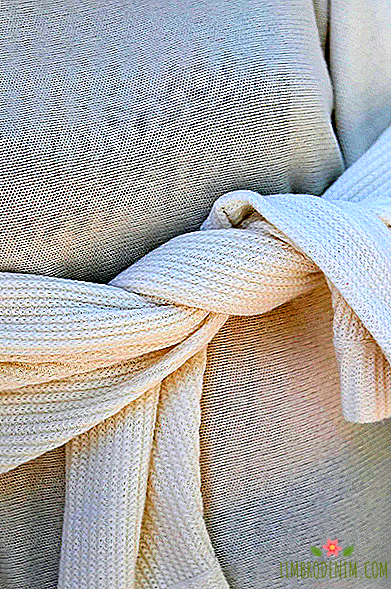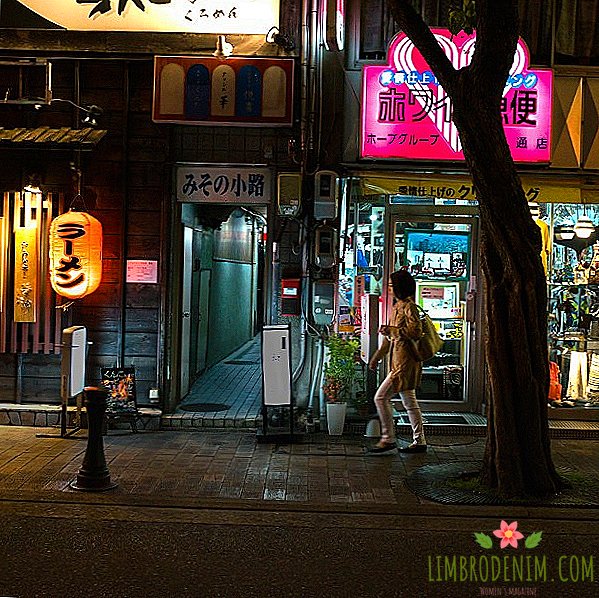From production to care: Everything you need to know about cashmere
Conscious consumption is not just a reduction in purchases but also a thoughtful approach to what a person acquires. In a fashion under crossfire, natural materials and synthetics alternately fall - in their own way, they can harm the environment. With cotton, wool and acrylic, we figured out - and what about cashmere? According to the UN, in 2016 alone, the total value of cashmere products for export amounted to about 1.4 billion dollars - almost five million kilograms of jumpers, cardigans and other things. More recently, such material was not an expensive pleasure, but today the demand for cashmere is only growing, and its cost is falling. We understand how this happened and whether it is worth buying cashmere sweaters in the mass market.
Text: Anna Eliseeva

How did he appear
For a long time, the production of cashmere was considered to be a difficult craft, which was mainly carried out in Asia - the first attempts to copy technology in Europe were unsuccessful. According to legend, the Persian philosopher and traveler Mir Sayyid Ali Hamadani discovered the new raw materials in the XIV century. In a place called Ladakh there lived a rare species of goats with a very thin and warm undercoat - the story says that Hamadani himself knitted several socks from him, which he then presented to the king of the Himalayan region of Kashmir. The ruler was pleasantly surprised by the durability, softness and subtlety of the products, so that the production of cashmere did not take long to wait.
The first cashmere shawl came to Europe at the end of the XVIII century. The thing led the French aristocracy to delight: soft handkerchiefs became a symbol of luxury - for example, the first wife of Napoleon Josephine allegedly had at least a hundred. In the XIX century, European industrialists themselves began to try to produce cashmere - only the Scots, who did not seek to grow rare goats in unusual conditions, succeeded, and immediately bought raw materials in China. Enterprises that supplied fluff from Asia just began to open around the world, including in Italy, the United States and Australia.
How to get cashmere
Cashmere is produced from the undercoat of mountain goats, which inhabit more than ten countries, including India, China, Iran and Iraq. If the product label shows Scottish or Italian production, then, as a rule, this means that there was woven material, the raw material for which was still bought in Asia. Goat down combed by hand without harm to animals - so say brands seeking transparent production and working with farmers. Svetlana Tegin, founder of the TEGIN brand, and Lyudmila Norsoyan, founder of Fashion Factory School, agree. “If the goats are not combed, the down will shed, hang down and interfere with the animal,” said Norsoyan.
One of the most valuable is considered to be the down of animals that are bred in Mongolia: to survive in a harsh climate, goats grow a special undercoat, the air cavities in which help maintain the thermoregulation of the animal. The latter is especially necessary for them: in winter the local temperature reaches minus fifty, and in summer - plus forty degrees. The cashmere fiber has a diameter of less than nineteen microns, but despite its fineness, it is stronger, lighter, softer and warmer than any other wool.
"The key factor in the production of cashmere is purely natural: what kind of winter will fall out, whether there will be a large temperature difference when changing seasons, how a goat will eat, what it will have time to grow down during the winter. The smaller the diameter and the longer the fiber, the more valuable the cashmere. World harvest "Unpurified fluff is about 250 tons per year. One goat annually gives up to 150-200 grams of raw materials (30-40 grams after manual cleaning). We recall the multiplication table and calculate how many goats should" feed "the down on our sweaters and how many sweaters really possible production esti - explains Ludmila Norsoyan -. There is a nuance most valuable fiber is hardly dyed notorious Loro Piana, Brunello Cucinelli and other luxury brands do not just offer cashmere natural colors -.. delicate fiber structure coarsens from processing chemicals and pigments. " "According to the Council for the Protection of Natural Resources, to produce cashmere for one sweater, four goats are needed," adds Greenpeace employee and Zero Waste project, Irina Kozlovsky.


What else the price depends on
Svetlana Tegin notes that luxury brands often use the so-called baby cashmere - high-quality raw materials from the wool of young goats, while the mass market - medium quality fuzz, whose villi are shorter and thicker. Baby cashmere is obtained at the first combing out - one goat gives only 30 grams of fluff; in the villi of such an undercoat, the tapered ends, due to which the fabric is especially soft. It is used, for example, by the brand Loro Piana, for whose sweater will have to pay about a thousand euros, or even more. "If you mix cashmere with silk, then the product will be more subtle and difficult to produce, but it will not affect the quality. If the down is mixed with identical synthetic materials, which make mass-market brands, then the product will be several times cheaper however, it will never match the quality and properties of natural cashmere, "says the designer.
In nineteen years alone — from 1990 to 2009 — the goat population in Mongolia has grown from five to twenty million. Today, material production has spread throughout Asia and to some European countries, but China remains the undisputed leader, creating 70% of the world's cashmere. The Business of Fashion edition believes that because of the desire of brands to make the material affordable, its quality has significantly decreased and, moreover, fakes have appeared. Francis Cosen, director of the Cornell Institute of Fashion and Fiber Innovation, claims that under 100% cashmere there can be a mixture of wool, viscose, acrylic, and possibly even rat fur.
"Cashmere in its pure form or its mixture with noble silk and / or with the best varieties of merino wool can be equally durable with gentle operation and care. But it is important to understand if less than 10% cashmere is indicated in the composition, then its presence is more likely a marketing move, but not a real need, "adds Norsoyan.
Is cashmere harmful to the environment - is it ethical to produce it?
"Due to the growth of livestock goats in Mongolia, the damage to nature is obvious - says Irina Kozlovsky. - 90% of the area is already under threat of becoming desert, including due to overgrazing. It exacerbates climate change, which leads to the loss of biodiversity: deserts were home to endangered snow leopards, wild horses and Tibetan antelopes. "
Representatives of PETA also urge not to use any natural materials, including cashmere, primarily because of the potential threat to animal health. According to zoodefenders, manufacturers start combing goats even in winter in order to get raw materials as quickly as possible - contrary to promises that goats are relieved of fluff only in spring during natural molting. Due to hair loss and stress, animals risk freezing and dying, PETA said.
Many brands were ready to abandon materials of animal origin - not only natural fur, but also cashmere. So, in the summer of 2018, ASOS announced that it would stop selling products using feathers, down, mohair, silk, cashmere, bones, teeth, and shell. The company promised that by the end of January 2019 there would be no products from these materials left on the site. In addition, Topshop, H & M and Marks & Spencer decided to abandon Mohair. According to the PETA report, workers in twelve farms in South Africa, the world's largest producer of mohair, treated the goats roughly, mutilated and even killed them. The organization believes that in any production involving animals, it is not without cruelty.
Not everyone, however, agrees with this approach. Australian designer Amy Jones, who founded the Mia Fratino brand of cashmere things, believes that big companies like ASOS are misleading consumers by exposing cashmere to unethical material. She does not deny that cheaper products may belong to unscrupulous manufacturers who may abuse animals or use impurity yarn. However, expensive brands can afford to follow the stages of production and make the process ethical and transparent for the buyer. "We are concerned that the rejection of cashmere stimulates bulk purchases of synthetics, which, in turn, negatively affects the environment," adds Jones. Claire Press, editor of Vogue Australia, agrees with her: “It’s wrong to say that one type of fabric is good and the other is bad. It all depends on what production was at each stage. Do you pay attention to animal welfare, carbon footprint, the possibility recycling, the use of toxic chemicals? You need to consider all of the above. "


What are the alternatives
Finding an alternative to cashmere or just material that meets all ethical and environmental standards is incredibly difficult. “For example, the production of alpaca wool is more environmentally friendly than cashmere. Alpaca drinks less water than a goat and gives enough wool for a year to make four or five sweaters,” explains Greenpeace. “I don’t presume to recommend synthetic fabrics, because every wash, microplastic fibers get into the sewage system, and it’s still impossible to clean the wastewater from them.If you want to reduce your ecologically clean clothes, buy second-hand. Twenty new things are produced for each person a year - it seems a little, but in total you get "one hundred and forty billion."
If you are not ready to completely abandon new clothes, you can rely on products whose production is fully or partially transparent. For example, Patagonia, which in the past produced cashmere clothes, today refused to use it, but offers things from cashmere trimmings. According to Kozlovsky, the next result from such material is 80% lower compared to the traditional one. The Naadam brand tracks and shows all production steps, and also uses only eco-friendly dyes and water filtration. Once a year, the brand management comes to Mongolia to purchase raw materials from nomadic families, thereby supporting traditional local production. As noted in the Naadam, shepherds are good to their animals, getting the fluff in the usual way - combing.
How to care
If you bought a cashmere thing, make sure that it serves as long as possible. Designers note that with proper care, the product can be worn for life and passed on to next generations - the key role here is played by the natural composition. So, brands working with cashmere, it is advised to always wash the product by hand in warm water no warmer than thirty degrees and use special products or baby shampoo and rinse, trying not to rub or twist the thing. To dry is on a towel horizontally, in expanded form. From time to time you will have to brush the product with a special brush to collect the pellets. In addition, the cashmere thing can always be attributed to repair in the studio, and some brands offer their own workshop to restore them, for example, as the German brand Allude. But the basic care depends primarily on the owner of the thing.
PHOTO: allude-cashmere, naadam





